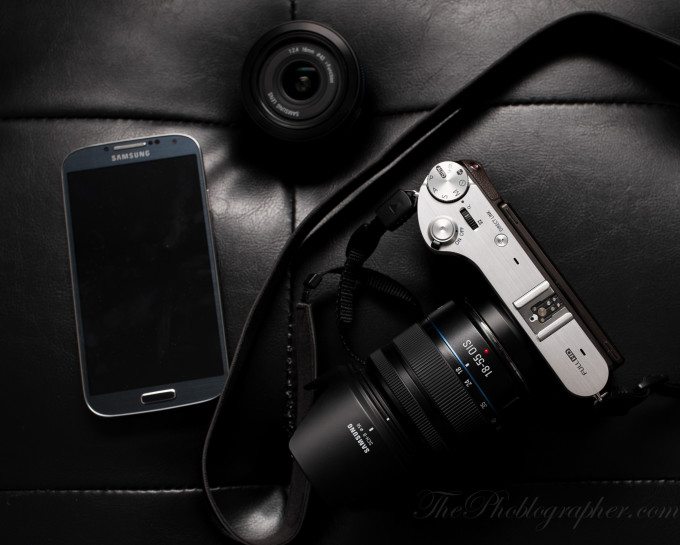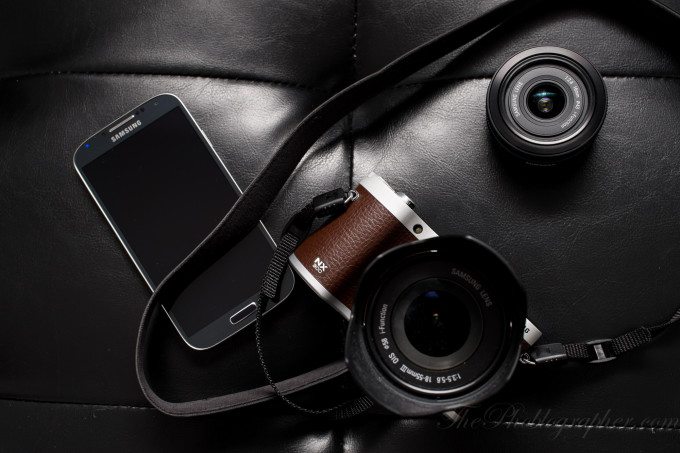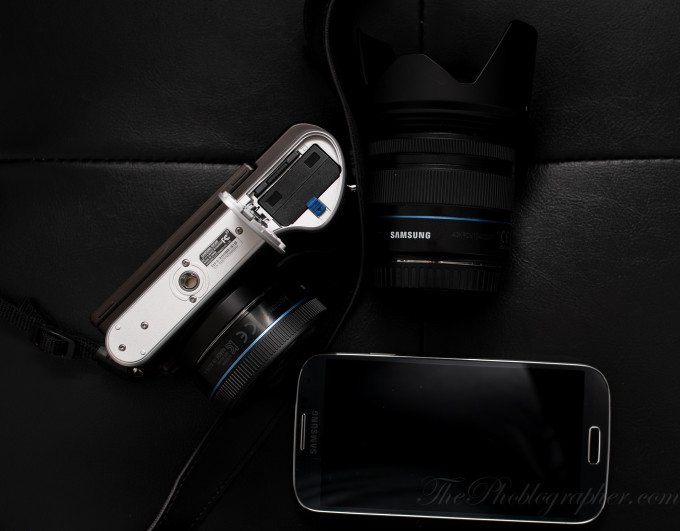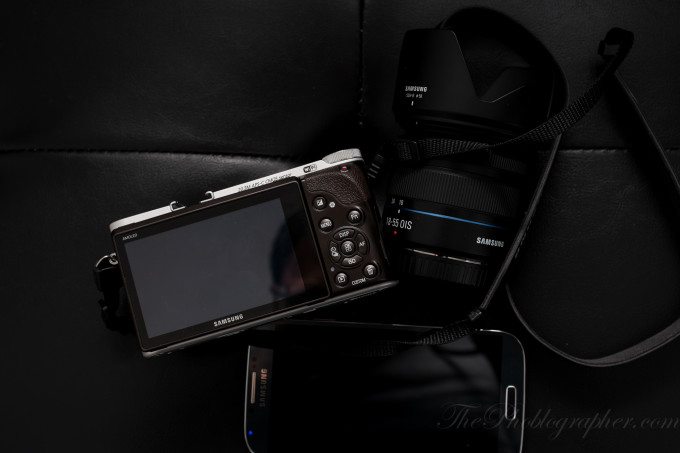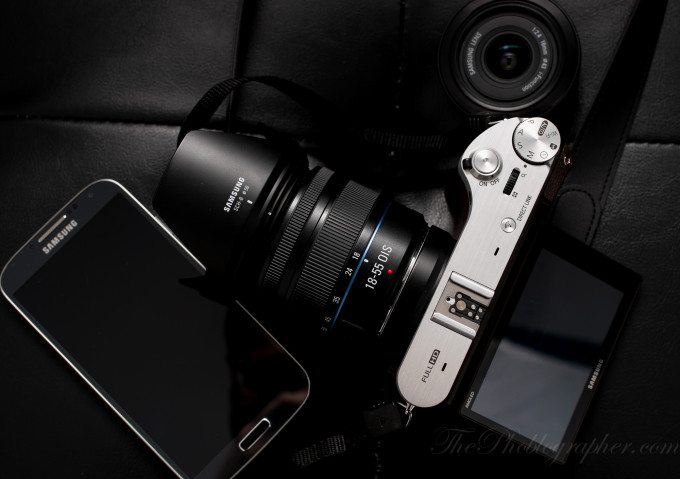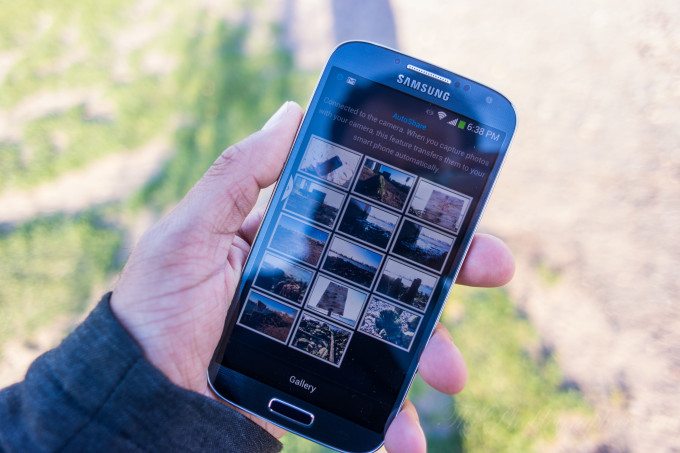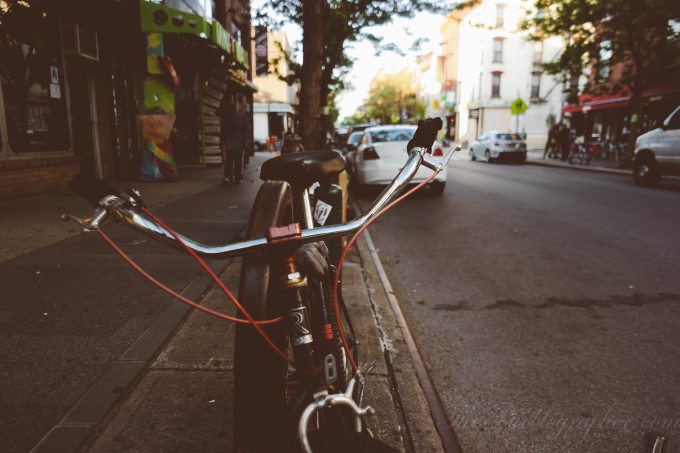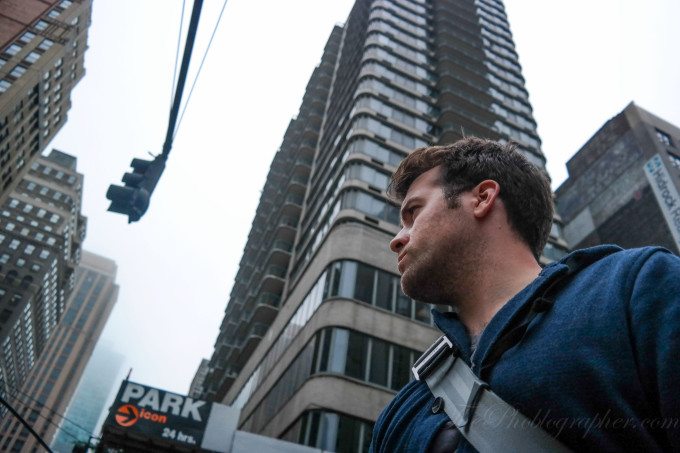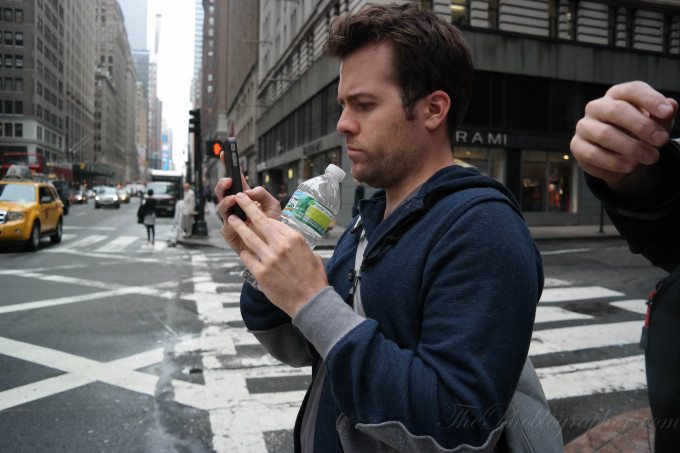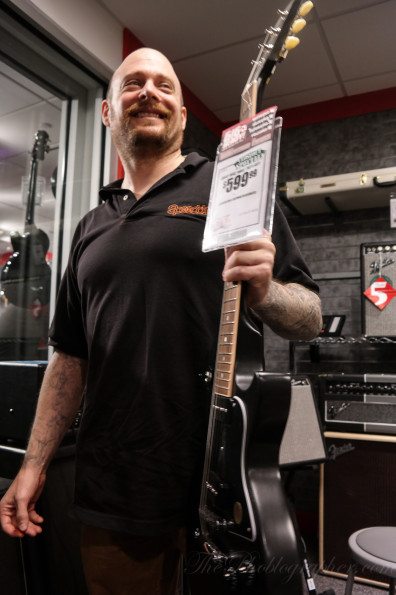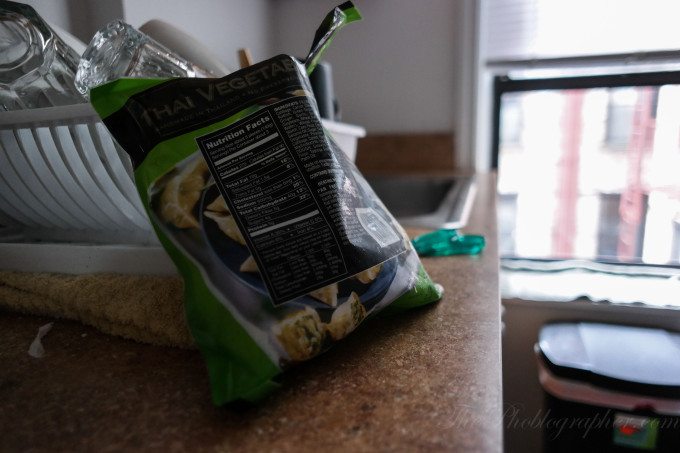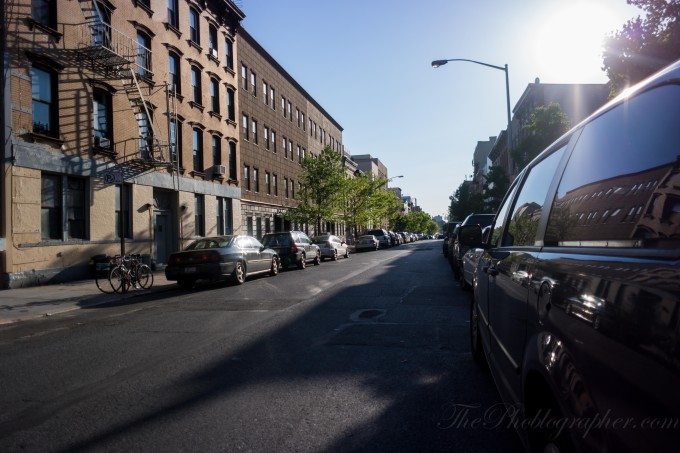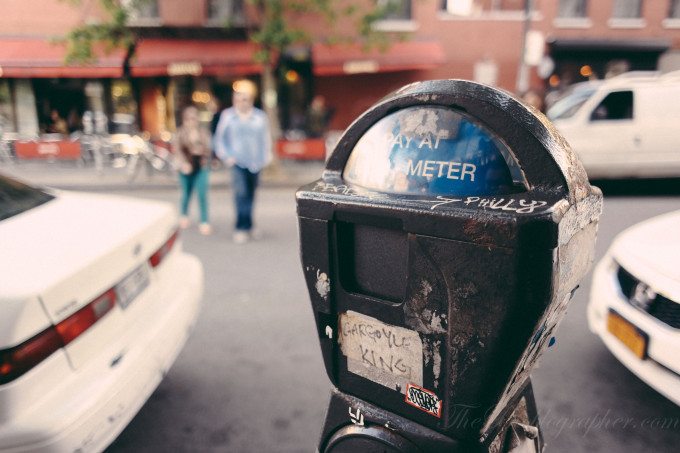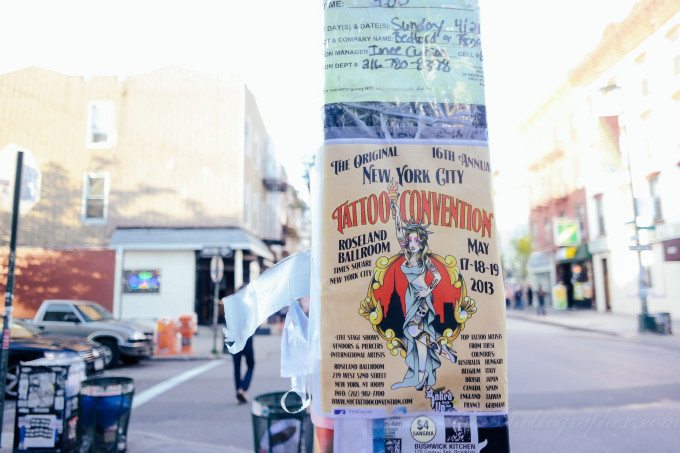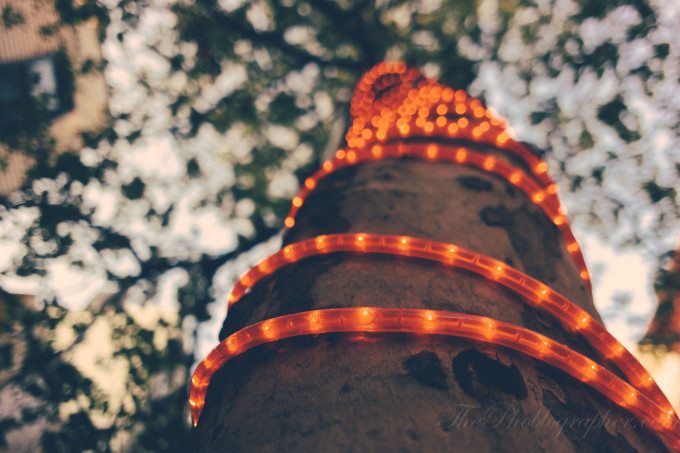Last Updated on 12/02/2013 by Chris Gampat
The Samsung NX300 is a camera that has a major emphasis on mobile sharing. With built in WiFi transmission and a a very sleek interface, the NX300 is also aiming to change your workflow. Though it comes bundled with Adobe Lightroom 4, it also will play nicely with other devices. The camera changed our workflow quite a bit when testing it, and using the camera was one of the most fun experiences that I can remember in my years of running this site.
If you’re a bit more serious though, this camera might not be the one you say, “I do” to.
Pros and Cons
Pros
– Wifi connectivity is fast
– Nice leather look with the brown finish
– Gorgeous LCD Screen
– Simplest menu interface we’ve seen in a while
– It fits into a blazer pocket
– Excellent build quality
– Very comfortable to shoot with for long periods of time
Cons
– Autofocus lags behind Sony and Olympus, but shouldn’t be called slow
– We really wish that the images could be uploaded directly to Instagram or Facebook from the camera, in the same way that it can email them. Correction: You can upload directly Facebook (it’s under the SNS icon in the WiFi mode/settings. This also isn’t intuitive
Gear Used
We reviewed the Samsung NX300 with the 18-55mm, 16mm f2.4, and Samsung Galaxy S4 phone.
Tech Specs
Specs taken from the B&H Photo listing
- 20.3MP APS-C CMOS Sensor
- DRIMe IV Image Processor
- 3D Still & Video Capture Capability
- Full HD 1080p 60fps Video Capture
- 3.31″ AMOLED Tilt Touch Screen Display
- Hybrid Auto Focus System
- Dual Channel Wi-Fi via SMART CAMERA App
- Touch AF and Touch Control LED
- Includes 20-50mm Lens and SEF-8A Flash
- Includes Adobe Lightroom Software
Ergonomics
Though the Samsung NX300 is hiding behind the pretentious lens hood of the 18-55mm kit lens in the above photo, it is extremely plain vanilla wrapped in leather on the front. There are no buttons except for the lens release and there is also the AF-Assit bulb. But the real treat is the sexy leather-like finish.
To get the camera started, you’ll need to head to the bottom: and there is where you’ll load up both an SD card and the battery. The bottom plate is made of aluminum–which further adds to the build quality.
The back of the camera is essentially the control deck. Here is where you’ll find the touchscreen AMOLED display, and all the buttons to control shooting including menu, ISO control, playback, and a heck of a lot more.
That screen also flips up to function almost like a TLR for shooting–and in our tests this is how it was most comfortable. But on top of the camera is the hot shoe, on/off switch, shutter release, exposure control, mode dial and the direct link button. Also, the top plate is made from aluminum.
Build Quality
The NX300 has a very solid build quality for its positioning in the marketplace. The camera is targeted at slightly above an entry level model, and feels fairly rugged and almost like an old SLR camera. The retro styling and aluminum body perhaps add to this feeling.
Granted, you need to get used to it if you’re significantly more experienced with those types of cameras, but the person that is new to interchangeable lens cameras will appreciate the craftsmanship.
Ease of Use
I’m significantly more used to Olympus, Sony and Fujifilm cameras but I was able to wrap my head around the NX300 pretty darn quickly. It’s nice to have a dedicated ISO button on the back and the only other major control that I often worried about was the exposure. The top dial for exposure control makes me feel right at home as I am a Canon DSLR user.
The Fn button around the lens was also quite a nice touch. Though I often tried to shoot wide open with the lens, it was nice to press the button and then use the top control dial to adjust the aperture or ISO depending on what setting I was in.
Using the Wifi functionality is extremely simple. It is done via an Ad Hoc system with the router built into the camera. Using the Smart Share app on your Android device or iPhone, you’ll be able to port images right over to your gallery. We had problems doing with this my HTC One S as the images were being sent by the album wouldn’t be recognized by my gallery. However, it worked flawlessly with a Galaxy S4.
Once the connection is made, you just need to keep shooting and the images will be sent over to the phone. My favorite thing to do after shooting was to send them over to Instagram, so in order to do this I needed to exit the Smart Sharing app which then cut off the Wifi and over a data plan I was sending the images to Instagram in a seamless process.
In all honesty, it felt quite liberating: no one is going to sit there and pixel peep on Instagram and positively no one would care that I shot at ISO 6400 or above because on that platform, it’s all about the content and nothing else.
Further, Instagram’s filters look wonderful with the Samsung files.
The one absolutely major problem that I had with the camera though is that it didn’t work with flashes from any other company or even Pocket Wizards. Come on, Samsung!
Editor’s Note: My unit apparently had a busted hot shoe. It works with Pocket Wizards up to 1/160th of a second. That is the fastest their system will sync.
Autofocus
The autofocus of the Samsung NX300 isn’t really slow, but instead it can be classified as more standard. Olympus and Sony are fast, but Samsung can’t touch them in focusing speed. We tried using it for street photography and it just really couldn’t keep up unless the subject was stagnant. Users wanting a camera for something like that or candid should instead spring for Olympus, Sony, or the Fujifilm X100s.
The NX300 can focus quite accurately in low light despite its slower moving algorithms–and that’s a major relief when in a dark bar or out at night.
Editor’s Note: Samsung challenged my statement on this until I brought the OMD into their headquarters in NYC. The OMD is a tad faster than a more functional unit that they had on hand. To be fair, the entire focusing system for Olympus is all the same minus the EP5, as is the focusing system for Samsung’s minus their latest NX2000.
Metering
In a metering test, we found the Samsung NX300 to conform perfectly with Sunny 16 standards, but the images that we saw weren’t always perfectly balanced. Instead, they were overexposed a bit.
We double tested this with a hand-held lightmeter and found the same results.
Image Quality
Overall image quality from the NX300 was pretty darned good, but it still isn’t on par with Olympus, Sony, and Fujifilm. We loved the colors from this camera and in the editing process, we found the images to be easily edited in Adobe Lightroom. Further, VSCO Film 3 played very nicely with the files.
In our tests though, we discovered that shadow detail is much better with the Samsung made sensor, and we also sometimes discovered smudging with the JPEG files at higher ISOs. Otherwise though, the images were sharp as ever with either one of the lenses we mounted on.
RAW File Versatility
In our tests, the Samsung RAW files have more versatility in the shadows than they do in the highlights and so we recommend that you try to underexpose your images and then push them in post if you’re doing to do any sort of editing. Perhaps this is because Samsung mostly expects users of this camera to not use a flash of any sort–at least that is the impression we get since a flash doesn’t come with the camera.
Correction: the camera does come with a flash, but my unit didn’t.
High ISO Capabilities
When the images were brought into Lightroom 4, we saw lots of nice tight film grain in the images. There is no color banding or other problems that one would see with older generation sensors. The high ISO image noise is about on par with that from other APS-C sensors from Sony and a bit better than the sensor in the Olympus OMD EM5.
However, Fujifilm’s X Pro 1 beats the sensor here.
The main killer of the high ISO factor though is the built in Wifi. When you upload an image to Facebook or Instagram, who the heck cares what the high ISO image noise looks like?
Editor’s Addendum: the X Pro 1 and the OMD have the same sensor as the XE-1 and the EPL5; which more closely take on this camera.
Extra Image Samples
Conclusions
We had a lot of fun with the Samsung NX300. The new mobile workflow is liberating and means that you won’t always spend loads of time in front of a computer. Though I like to do so, the camera emphasizes more of a workflow of shooting and sharing–and I like that. It’s fun! And sometimes, we need to be reminded that photography should be fun.
The ergonomics and build quality of the NX300 are extremely good and the image quality is more than acceptable but still can’t overtake some of its competitors. Samsung can work on their autofocusing algorithms though–and that may even require new lenses.
In the end, this isn’t a bad camera at all and in fact it is quite an exciting camera. However, it is targeted at the consumer segment and for that market, they’ll get quite the package. If you’re just looking to have fun, then we strongly recommend this camera. In fact, we give it an Editor’s Choice rating.
Please Support The Phoblographer
We love to bring you guys the latest and greatest news and gear related stuff. However, we can’t keep doing that unless we have your continued support. If you would like to purchase any of the items mentioned, please do so by clicking our links first and then purchasing the items as we then get a small portion of the sale to help run the website.


